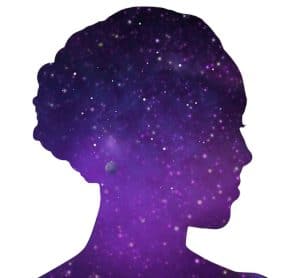What astronomy offers psychology
 It had been a long time since I took the telescope out onto the front lawn for a spell of stargazing, just over a year according to the calendar built into the electronic guidance system of my small glass. Time gets away, new concerns take precedence, and the town installs brighter streetlamps. The stars fade.
It had been a long time since I took the telescope out onto the front lawn for a spell of stargazing, just over a year according to the calendar built into the electronic guidance system of my small glass. Time gets away, new concerns take precedence, and the town installs brighter streetlamps. The stars fade.
But one night this past summer before Jupiter slipped beneath the treetops, a quick glimpse reminded me of what astronomy has to offer psychology. A heightened sense of awe, perspective, humility, and a feeling of wonder are all there at the price of simply looking up.
This was also what the PBS television network called the summer of space with special programs commemorating the first manned lunar landing 50 years ago and the launch of the two Voyager space probes to study the outer planets of our solar system eight years later.
Fifty years ago, I watched live television coverage of Neil Armstrong’s historic first step on the moon and felt the thrill of this historic achievement. This summer, a PBS documentary on the Voyager mission reminded me of what matters most.
The Voyagers discovered new features of the giant outer planets and their moons and returned stunning close-up pictures of these alien worlds. The mission scientists saw nine volcanoes on Jupiter’s moon Io, 11 new moons and two new rings on Uranus, and what appeared to be a window in the upper atmosphere of Neptune, which they called the Great Dark Spot.
As much as these and related discoveries contributed to our understanding of the place where we live in space, it was the human element that distinguished this film from a typical documentary.
As the program shifted from the Voyager photos to the reactions of the mission specialists three decades later, viewers saw and heard veteran scientists reflect on their roles in this grand adventure with a sense of humility and awe at the marvels of the solar system that their efforts uncovered.
Men and women of science spoke with childlike wonder at the unexpected beauty of deep blue Neptune and the fiery eruptions of lunar volcanoes, their fury silenced in the vacuum of space.
Some held back tears as they described their emotions when the first photos came back from each planetary approach. Surprise, delight, puzzlement, and the triumph of a problem solved danced in their eyes as they told their parts in the story they all helped to create.
Footage of the control room at the moment of first contact looked and sounded like the locker room of a World Series champion after a decisive game seven win. Whoops, cheers, and shouts of joy were the order of the day.
When Voyager 1 sailed past Neptune, it was bound for interstellar space, but before it left our neighborhood, astronomer and NASA advisor Carl Sagan wanted to turn its cameras around for a last family portrait of our solar system. He encountered strong resistance from NASA officials who argued that there was no scientific value to such a photo, no new information that could be gained from the effort.
Sagan appealed to a higher authority, and the planets smiled for the camera, though from the distance of the spacecraft, the photo showed only a series of dots, one for each planet. But where was Earth? The place where it should have appeared was blank except for a striped pattern and a speck of dust on the image. A mission specialist described how she tried to wipe the speck off and suddenly realized that the speck was home.
Referencing that photo, Carl Sagan described the planet Earth, our home, as “a pale blue dot suspended in a sunbeam.” There are some wonderful videos of Sagan commenting on this image, and if you haven’t seen them, a simple Google search will be well rewarded.
The astronomer begins by calling our attention to the dot in the photo, the place where “every human being who ever was has lived out their lives.” He reminds us that Earth is a tiny stage in a vast cosmos, and on that stage, taking up less than a pixel of the image, natives of one fraction of that pixel have killed inhabitants of another fraction to gain dominance of the world.
We are but a speck of dust in a vast and inhospitable universe, and in Sagan’s view, we do not yet have the ability to migrate elsewhere. There is, in fact, no elsewhere that we know of that is capable of supporting human life.
Sagan concludes his remarks with this observation. “There is perhaps no better demonstration of the folly of human conceits than this distant image of our tiny world. To me, it underscores our responsibility to deal kindlier with one another, and to preserve and cherish the pale blue dot, the only home we’ve ever known.”
Awe, perspective, humility, and wonder were all there in this depiction of the Voyager mission, the same gifts that reward even a casual observer of the night sky. They offer the same thrill that comes through the lens of my own small telescope. But now, through Voyager’s eyes and Carl Sagan’s words, astronomy was reminding psychology to do what psychology does best – to understand what it takes to treat one another kindly and to help make it happen.
